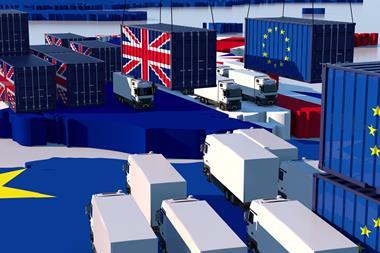Real time information from a shared network enables a speedy resolution of supply problems, with the benefits bouncing up and down the chain
It's wake-up time for those retailers who have spent years dreaming of a supply chain that actively removes the problems of stock-outs, excess cost and wastage while ensuring the right product assortment for current demand.
The dream has become a reality with the advent of new supply chain technology.
Supply chain management in the past has meant many different functions trying to share information with each other from many different systems.
Coupled with the management of a whole range of suppliers and customers across the supply chain, that has led to a piecemeal and fragmented approach in which no-one sees the bigger picture or effectively manages the extended supply chain. Promotional management is a nightmare, sales are lost because of poor forecasting and distribution costs are high.
Traditional supply chains can manage the steady state in business but when it comes to unforeseen circumstances, from a fuel crisis to a flood or even an immediate retail promotion, they can't respond quickly and flexibly. Failing supply chains have massive knock-on effects from mountains of wasted produce and empty shelves to farmers who suffer when milk deliveries don't reach the customer on time.
Now, real time global visibility through internet application software means there's no reason for supply chains to fail.
David Hindson, marketing director of Scio, a new TDG company to manage and optimise supply chains, believes the benefits of more visible supply chains are enormous.
Scio has been set up to exploit the opportunities made possible by new technology. Created from an alliance of Cap Gemini Ernst & Young and TDG, it is one of only a handful of companies that offer e-enabled supply chain management.
Hindson sees a fundamental change in how we think about supply chain management, not as a linear process, but as a network.
"Internet technology is the new enabler. The hub' supply chain model, like our own network collaboration wheel, is positioned at the very heart of the supply network, so suppliers, third parties, customers and the organisation can exist in a common network," says Hindson.
"The advantages of this greater visibility are that inventory can be controlled more accurately. When this is supported by exception reporting an immediate alert is sent to the right person. The result is a more open approach that increases business confidence and avoids firefighting' problems come to the manager as they occur, not afterwards, so the manager can focus on priority information, passing this on to customers further down the line.
"Real time information enables decisions to be made instantly, reducing risk on all sides by detecting problems before the missed time window has a knock-on effect through the supply network. If you can see it, you can manage it.
"Also, new technology transforms promotional management more visibility means promotions can be better managed, reducing wastage and out of stocks while improving forecasting.
"The food industry has been searching for this balance for years.
"Other benefits include lower fuel and driver costs, and environmental spin-offs," says Hindson.
Research by AT Kearney has shown supply inefficiencies can waste up to 25% of a company's operating costs. With profit margins of only 3% to 4%, even a 5% cut in supply chain cost can double a company's profitability. Cost benefits of new technology are obvious. Products can be stored for a limited time because orders are more focused on actual rather than projected demand, producing a reduction in out of stock rates (vital for products with a short shelf life or where there is fluctuating seasonal demand).
Deliveries can be integrated and pre-planned (ensuring a more flexible customer response and a reduction in unused capacity). Resources can be better allocated to match workflow requirements and lower transportation costs.
The latest technology has made the supply chain the new global battleground in the race for competitive advantage. More powerful applications, web technology and greater visibility are enabling the grocery sector to improve customer service while cutting costs.
Hindson says: "The massive potential lies in the network-based relationships that will exist between supply chain partners around the world."
{{FOCUS SPECIALS }}
Close menu
- Home
- Buying & Supplying
- Stores
- Channels
- Finance
- People
- Reports
-
Events
- Back to parent navigation item
- Events
- The Grocer Gold Awards
- LIVE: Retail Week x The Grocer
- The Grocer New Product & Packaging Awards
- The Convenience Awards
- The Convenience Conference
- Rethinking Materials
- Food & Drink Expo
- Farm Shop & Deli Product Awards
- Farm Shop & Deli Retailer Awards
- The Omnichannel Conference
- Jobs
- Subscribe now
Sign in to comment on this article
Not logged in before? Register for FREE guest access today.
You will be able to:
- Read more stories
- Receive daily newsletters
- Comment on stories
Advert









No comments yet